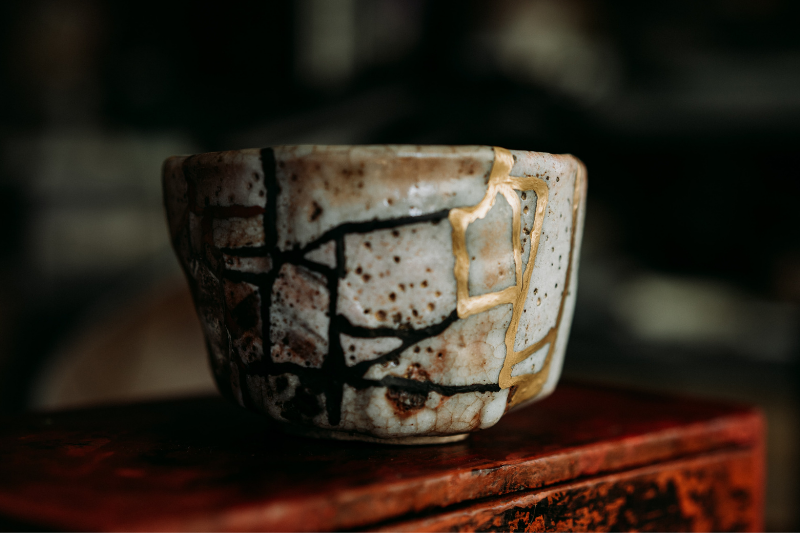Don't Despair - Learn the Golden Art of Repair
25th Aug 2021

Many of us have experienced that horrible feeling of breaking something fragile and precious, such as a piece of tea-ware or porcelain. It can be annoying if the item is expensive, but downright upsetting if it holds sentimental value.
So what do you do if you destroy a treasured piece of pottery? The answer may lie in a centuries-old art form. Kintsugi (golden joinery) is the art of mending broken ceramics using lacquer coated with silver, gold or platinum. Rather than seeking perfection, the philosophy of this technique embraces imperfections and views the breakage as part of the objects rich history.
Origin & Philosophy
The exact origin of Kintsugi in unclear, but respected historians believe that it can be traced back to the 15th century. According to legend, the art form was born when the Japanese Shogun, Ashikaga Yoshimasa had a broken tea bowl (chawan) mended and was upset to see that it had been fixed using unattractive metal staples. This was a driving force for Japanese craftsmen to develop a more attractive form of repair.
As well as being charming to look at, this 'golden form of joinery' is closely linked to the aesthetic principles of Wabi-Sabi, a Japanese view or philosophy encouraging us to see the beauty in things that are imperfect, impermanent or incomplete.
According to art historian, Kelly Richman-Abdou, Kintsugi can also be linked to two other Japanese philosophies: Mottainai, a sense of regret we feel when we waste something and Mushin, the mental state of accepting change.
Techniques & Style
The traditional method of Kintsugi uses urushi lacquer, but many modern repair kits use epoxy resin (or other suitable ceramic adhesive) along with liquid gold leaf or mica powder and a paintbrush.
There are three main styles of Kintsugi: Cracked, Piece Method and Joint-Call.
- Cracked uses minimal, fine lines to repair. This is the most common method, ideal for items that have broken into large pieces.
- Piece (or Makienaoshi) Method replaces lost fragments entirely with golden epoxy resin. This is ideal for fixing large chips that have been lost or parts that have been broken beyond repair.
- Joint-Call is the most skilled technique as two broken items of pottery are combined to make a unified piece.
Have a go....
A simple google search for 'Kintsugi repair kit' will bring up a variety of choices and Amazon certainly have a good range to choose from. However, you may be interested in something more guided and in-depth. Lacquer artist, Yoko Furuya, offers several online courses via Udemy, ranging from 'How to fix a very small chip' to 'How to fix a crack'. Alternatively Indytute offer an at home kit via online video tutorial. It may also be worth seeing if any local crafts people in your area are offering face to face 'in person' workshops.
Final Thoughts...
At The Teapot we love learning about innovative ways to reuse, repurpose and extend the life of all things related to tea. Kintsugi is a wonderful way to repair our valued cups, saucers, mugs and teapots. You never know, it could even revitalize old, broken items and give them a new lease of life.

